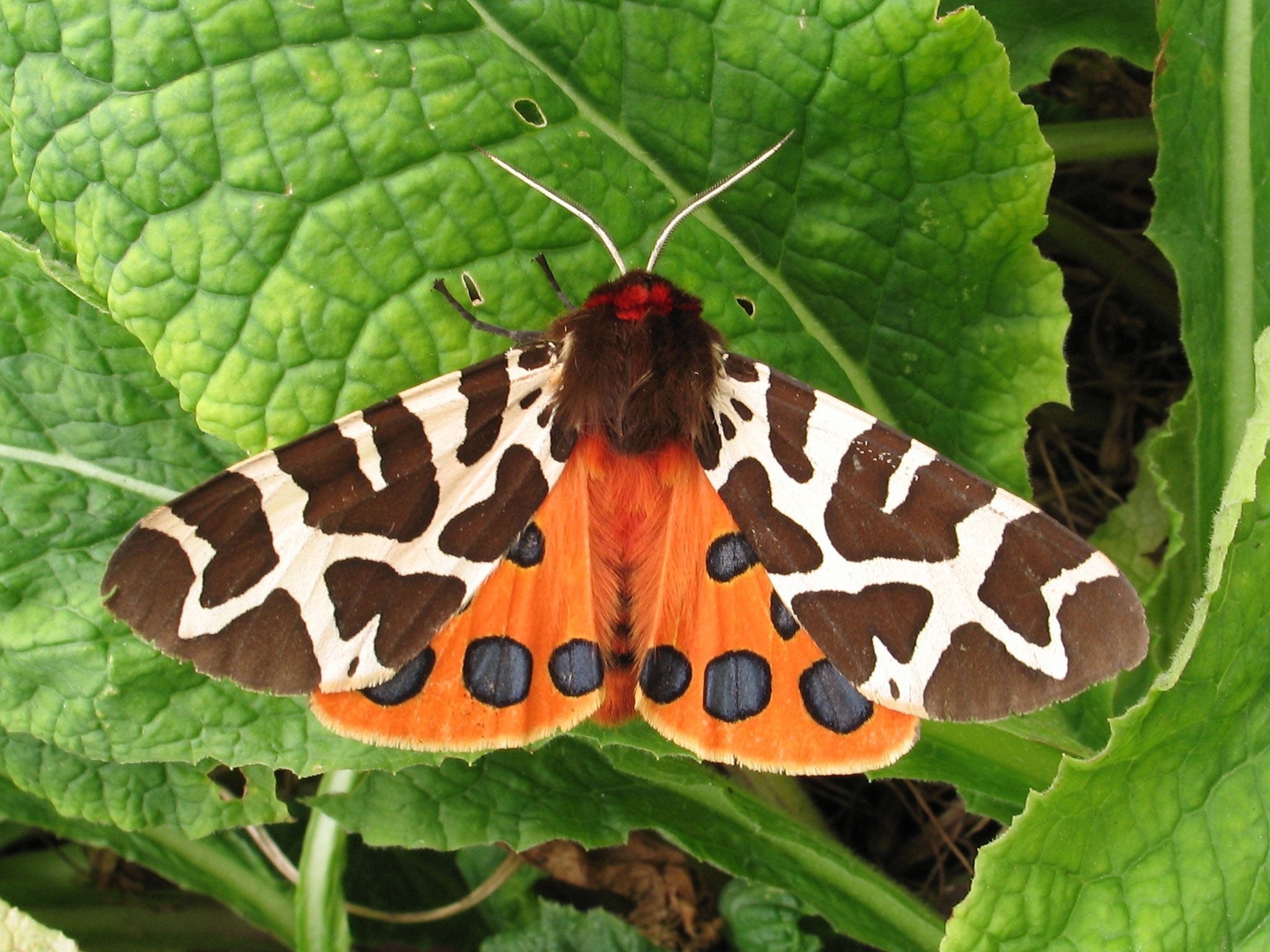British moths have crashed in numbers over past 40 years as part of widespread decline

Some of Britain’s most beautiful moths, such as the stunning garden tiger moth, have crashed in numbers over the past 40 years as part of a widespread decline, a new report reveals today.
Two-thirds of common and widespread larger species (macro-moths) have declined in that time, with losses in abundance much greater in the southern half of Britain than the north, according to the report by the charity Butterfly Conservation, and the agricultural research institute, Rothamsted Research.
Three species have become extinct in the past decade, while some once common garden species such as the garden tiger, the V-moth, and the spinach have decreased by more than 90 per cent from 1968-2007 and now face the real threat of extinction in the future.
The State of Britain’s Larger Moths 2013 reveals that the orange upperwing, the bordered gothic and the Brighton wainscot have all disappeared in the last 10 years, and these follow the extinctions of an additional 62 species during the 20th Century.
The report is based on the Rothamsted Insect Survey, a continuous series of records running from 1968 to 2007 on common and widespread species, records which represent the longest running national population trends of insect species known anywhere in the world.
It suggests that ongoing habitat loss and the deteriorating condition of the countryside are believed to be the major factors behind these declines.
Some two-thirds of the species recorded declined over the 40-year study, with 37 per cent of them decreasing by at least 50 per cent. The garden tiger has fallen in numbers by 92 per cent, the spinach moth by 96 per cent and the v-moth by 99 per cent.
The loss of tiger moths may be contributing the disappearance from southern Britain of cuckoos, which feed on their hairy caterpillars.
In the southern half of Britain, larger moth populations decreased by an average of 43 per cent in comparison to an average 11 per cent decline in northern Britain. The reason for the disparity between the two regions is likely to be due to higher levels of habitat loss in the south and the beneficial effect of climate warming on some moths in the north.
While moth populations have declined substantially in the last few decades, the period has also seen an unprecedented influx of new moth species to Britain.
More than 100 species have been recorded for the first time in Britain this century and 27 species have colonised Britain from the year 2000 onwards. Climate change is seen as a major driver for these new colonisers as conditions become more suitable for continental species.
“This report paints a bleak picture about Britain’s biodiversity,” said Butterfly Conservation Surveys Manager and lead author of the new report, Richard Fox. “Much has been made of the decline of butterflies and honey bees but moths represent the massive, but largely unnoticed diversity of insects that form the vast majority of animal life in Britain.
“The severe declines of once common garden moths and overall decrease in moth abundance that we found are a damning indictment of how recent human activity has devastated our native wildlife.”
EU pesticides ban 'could save bees'
Controversial nerve-agent pesticides, which are increasingly implicated in declines in bee populations around the world, may be partially banned in Europe.
The proposal from Brussels to limit the use of neonicotinoids – powerful poisons which have made billions for agribusiness but are seen as a major wildlife hazard – is the most significant development yet in the movement to outlaw the chemicals, and was greeted enthusiastically by environmental campaigners. It follows evidence casting doubt on the safety of neonicotinoids, as highlighted by The Independent.
Studies in the past three years have shown that neonicotinoids have adverse effects on honey bees, although manufacturers such as Bayer and Syngenta continue to insist they are safe.
The European Commission proposes banning their use on crops such as oil seed rape.
Michael McCarthy
Subscribe to Independent Premium to bookmark this article
Want to bookmark your favourite articles and stories to read or reference later? Start your Independent Premium subscription today.

Join our commenting forum
Join thought-provoking conversations, follow other Independent readers and see their replies